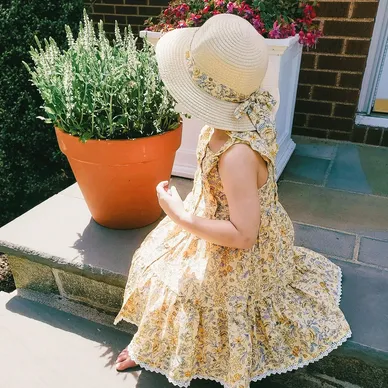
Summers at Scarlett's Garden


summer flowers Perennials & Annuals
BLACK-EYED SUSANS (rudbeckia fulgida)
- Sun or shade? Full Sun
- Soil? Well-drained, moist to dry soil. Mulch in late spring/early summer.
- Water? Water 1 to 2 inches per week. However, pay attention to the soil! When you notice that the top inch of the soil becomes dry, make sure to water thoroughly.
- Scarlett Says: We recommend using planter boxes, unless you want to spread as this perennial coneflower self-spreads easily.
MEADOW SAGE (lyrical white)
- Sun or shade? Full Sun.
- Soil? Hardy in the heat.
- Water? Water daily when planted, but can tolerate dry conditions once established.
- Scarlett Says: This summer, we planted these beauties in planters as well as in the back gardens. We prefer planting in the ground and recommend planting in soil 1-2 feet apart to establish clumping. Water thoroughly, and allow the soil to dry between waterings. These bloom in the spring through the summer and serve as a classic walkway border.
CONEFLOWER (Echinacea)
- Sun or shade? Full Sun. 7 hours in the sun on a daily basis.
- Soil? These prefer mulch and don't need fertilizer to flourish.
- Water? Water daily when planted and thoroughly to establish. Coneflowers are drought tolerant and can tolerate dry conditions once established.
- Scarlett Says: After planting three coneflowers, we noticed that although the plant is not invasive (or dominates surrounding flowers), it does self-seed and spread each summer naturally. In Scarlett's Garden, we nip this self-seeding in the bud by deadheading flowers when they fade in August. However, if you prefer not to deadhead, you can also cut back coneflowers in late autumn, which is another option we have previously went with and found this also works well.

Scarlett's Summer hydrangeas
LIMELIGHT HYDRANGEAS.
- What are limelights? This panicle hydrangea grows very large with incredibly large cone shaped blooms, starting the summer with a greenish white color, turning to pure white, then revealing a rosy-white, and finally auburn right in time for Fall.
- Sun or shade? Full Sun.
- Soil? Well-drained, moist to dry soil. Mulch in late spring/early summer.
- Scarlett Says: We recommend choosing a location that can accomodate the full growth of these large hydrangreas as limelights can grow and 6 feet to 8 feet (both tall and wide) and also self-spreads easily.
SUMMER CRUSH.
- What's Summer Crush? A round, reblooming hydrangea variety that is small but packs a punch with its profuse upright blooms from June through September.
- Color? Ruby red or neon purple blooms (depending on your soil).
- Size? 18" - 36" (both by height and width)
- Sun or shade? These hardy plants can withstand full sun but for best results, pick a place that offers morning sun and afternoon shade.
- Soil? Depending on the pH level of the soil, expect to see pretty purple or raspberry red blooms start to show their true colors in late May, so you can expect what to enjoy all summer long.
- Water? Water daily when planted. Although hydrangeas can tolerate dry conditions once established, best to water weekly.
- Garden Bed or Container? Both work.
- Scarlett Says: This summer, we planted these beauties in along the side of the Dutch door of the Gallage, which contrast well with the cedar shingle siding and do not overwhelm the area with its compact side, which leaves the flower bed looking neat and tidy. We prefer planting in the ground and recommend planting in soil 1-2 feet apart to establish clumping.












